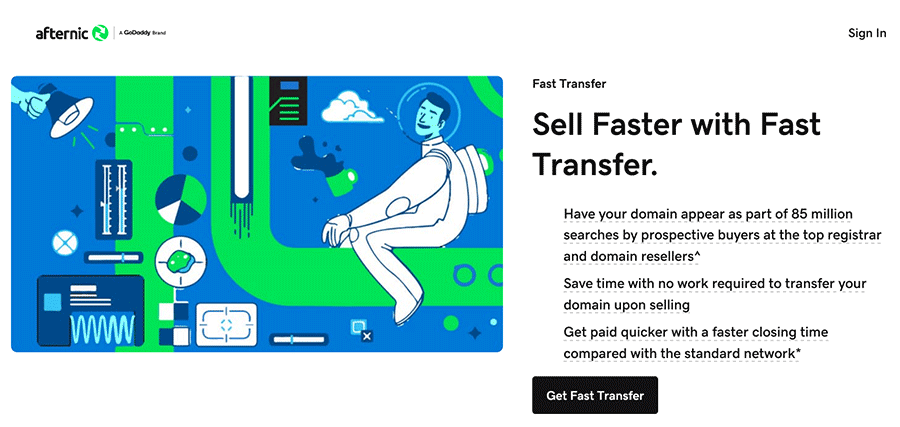Afternic’s Fast Transfer has been lauded as the domain industry’s automated game of professional tennis between seller and buyer.
As if by magic, the Fast Transfer enables the two parties to exchange domains for money quite fast. The transaction is usually complete, at least for the seller, in 24-48 hours.
That being said, the process requires the active participation of the domain seller, the losing registrar, and it only covers 10 TLDs. In contrast, the Sedo MLS covers more than 600 TLDs on its own independent platform.

Aaron Oxborrow is a seasoned developer who possesses both technical know-how and caustic humor; he has provided an analysis of what happens behind the scenes for Afternic’s Fast Transfer to actually work:
When I first started buying domains, the Fast Transfer process seemed a bit magical, like something that @GoDaddy must have conjured behind closed doors at an ICANN convention in Prague circa 1998. In reality, GoDaddy only purchased @Afternic a decade ago in 2013, and the Afternic DLS Network was already well established and not at all supernatural.
It turns out that Fast Transfer uses the same mechanism as every other domain transfer – EPP Auth Codes, sprinkled with a bit of pre-approval (opt-in) to grease the ICANN transfer wheels. Afternic DLS and Sedo MLS are simply a collection of APIs that facilitate the exchange of auth codes from “losing” registrar to “gaining” registrar. The pre-approval legal bit (opt-in) allows the registrar to initiate and consummate domain transfers on your behalf, required as per @ICANN rules.
It seems that Afternic lacks the development infrastructure to expand its supported TLDs “at whim” and this type of issue explains the problematic interfacing with sister platform Dan.com.
Copyright © 2025 DomainGang.com · All Rights Reserved.









